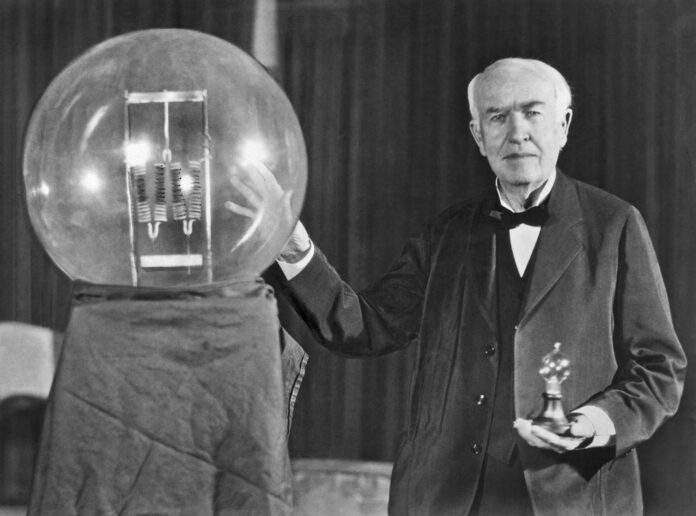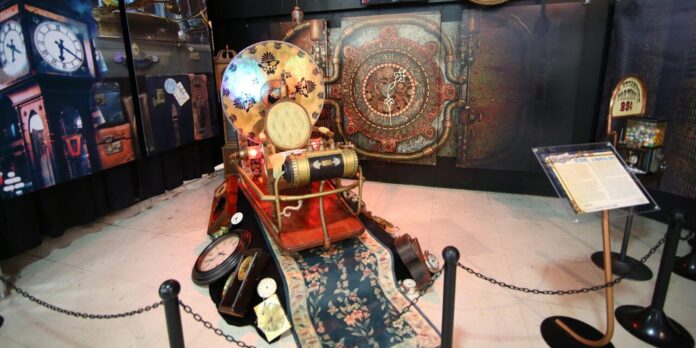The euphoria associated with a “Eureka!” moment has intrigued humanity for centuries. Throughout history, flashes of genius ideas have not only redefined civilizations but also continually propelled us towards a future filled with limitless possibilities. Whether it was Archimedes’ sudden realization about displacement during his famous bath-time or Newton’s introspection under the shade of an apple tree, these moments of enlightenment have always captured our collective imagination.
Beyond their dramatic nature, these instants symbolize the crescendo of human creativity and persistence, where mere inklings evolve into transformative inventions.

The Creative Process
The act of invention transcends mere sporadic insights. It is a multi-faceted journey rooted deeply in observation, relentless contemplation, and boundless creativity. Inventors, in their unique way, are akin to detectives. They delve into the intricate web of existing problems, tirelessly searching for gaps and inefficiencies that yearn for solutions. Challenging prevailing norms and conventions, they engage in extensive brainstorming sessions, employing various techniques to unlock their potential.
Methods like mind mapping allow for the visualization of complex ideas, while lateral thinking encourages looking at problems from entirely new perspectives. The TRIZ technique, a problem-solving tool from Russia, pushes for the elimination of contradictions in inventions. To gain more information and master these techniques, many inventors frequently refer to dedicated resources, books, or even workshops that have been specifically crafted to nurture and enhance creative faculties.
From Idea to Invention
While the inception of an idea is undoubtedly a pivotal moment, its metamorphosis into a tangible, practical invention is an odyssey filled with trials and tribulations. This arduous journey involves meticulous research, conceptualizing prototypes, rigorous testing phases, and numerous iterations based on feedback and results. The path is strewn with challenges, from the logistical nightmare of sourcing the right materials to the mental toll of handling criticisms and skepticism from peers.
However, every obstacle encountered serves a dual purpose. Not only do they act as stepping stones, nudging the inventor towards perfection, but they also help in refining and fortifying the initial idea, ensuring that it undergoes multiple enhancements before achieving the vision the inventor initially conceived.

Historical Invention Ideas
Our journey through time is marked by bold steps taken by inventors, introducing innovations that have irrevocably shaped the course of human history. These monumental ideas were not mere flashes of genius; they were the results of relentless pursuit and an unyielding desire to transcend boundaries.
Consider the humble wheel, an invention that single-handedly revolutionized transportation, facilitating the movement and progress that shaped ancient civilizations. Or Gutenberg’s printing press, a device that not only democratized information but also heralded an era of mass communication, drastically altering the way societies consumed knowledge. And who could overlook Edison’s light bulb? This remarkable invention dispelled darkness, bringing with it a surge of opportunities that redefined productivity and lifestyle.
Each of these historical invention ideas stemmed from a place of curiosity and a desire to fill a void that existed within their contemporary societal contexts.
Invention Ideas That Changed Daily Life
As we navigate through our daily routines, we seldom pause to consider the plethora of inventions that facilitate our modern comforts. These transformative ideas have seamlessly integrated themselves into our lives, indicating their profound impact.
From the revolutionary world of communication brought forth by Alexander Graham Bell’s telephone to the digital emancipation initiated by Tim Berners-Lee’s World Wide Web, our global connectivity has been utterly transformed.
In the realm of medicine, inventions like the X-ray machine by Wilhelm Roentgen have not only enhanced diagnostic precision but have also paved the way for medical advancements saving countless lives. If you desire to go the same way please visit this website.

Famous Inventors and Their Eureka Moments
The annals of history brim with tales of renowned inventors whose “Eureka!” moments have bestowed upon us inventions that we hold dear. These stories are not just about the climax of discovery but also portray years of groundwork, perseverance, and, occasionally, serendipity.
Take, for instance, the legendary tale of Isaac Newton’s inspiration for the law of gravity, spurred by a falling apple while he pondered motion laws. Or the story of Alexander Fleming’s accidental discovery of penicillin, a serendipitous find that revolutionized modern medicine.
Then there’s the unforgettable moment when Steve Jobs saw the potential in a graphical user interface, ultimately birthing the idea for the iconic Apple Macintosh.
Unsung Heroes of Invention
For every Thomas Edison and Alexander Graham Bell in the limelight, countless unsung heroes have contributed significantly to the tapestry of innovation. These lesser-known inventors charted unique courses, often improving our lives in fundamental ways, albeit without the fanfare afforded to their celebrated counterparts.
Consider Stephanie Kwolek, whose invention of Kevlar has saved countless lives, or Douglas Engelbart, who, despite his pivotal role in computer and internet development, remains relatively unknown.

Invention Ideas in Pop Culture
Invention has a whimsical side, prominently displayed through its portrayal in movies, literature, and TV shows. These realms of fiction have continuously sparked our imagination with concepts like H.G. Wells’ time machine or Gene Roddenberry’s ‘Star Trek’ replicator, offering glimpses into potential futures filled with marvels.
Even as these ideas captivate us, they also inspire real-life innovation, blurring the lines between fiction and reality. These cultural expressions reflect society’s inventive pulse and the unending human quest to push boundaries, whether through actual technological advancements or the boundless landscapes of our imagination.
The Impact of Invention Ideas on Society
Inventions are not merely catalysts for change; they are the very gears that drive human progress. The ripple effects of innovative ideas extend beyond their immediate, tangible benefits, often revitalizing economies, redefining societal norms, and uplifting communities.
For instance, the advent of the internet not only enhanced global communication but also transformed economic modalities, leading to the digital marketplace’s rise. Similarly, breakthroughs in renewable energy technologies are not just combating climate change; they are reshaping global politics and energy economics.

Encouraging Inventiveness
Inventiveness isn’t an inherent trait but a skill that can be nurtured with the right encouragement and resources. Aspiring inventors should be relentless in their pursuit of knowledge, unafraid to make mistakes, and always willing to learn from them.
Educational programs aimed at fostering creativity, workshops that hone problem-solving skills, and access to resources that simplify the complex world of patenting are crucial.
These tools are not just for individuals but serve as guides for educators to help instill a spirit of innovation in future generations.
Conclusion
Our expedition through the riveting realm of invention ideas underscores one fundamental truth: these flashes of genius are the cornerstones of human progress. From historical innovations that have stood the test of time to serendipitous discoveries that have reshaped our world, each eureka moment carries with it the essence of change.





![Calgary’s Hottest Neighborhoods for Luxury Homebuyers [2024]](https://thewashingtonote.com/wp-content/uploads/2024/04/Calgary-324x160.png)



